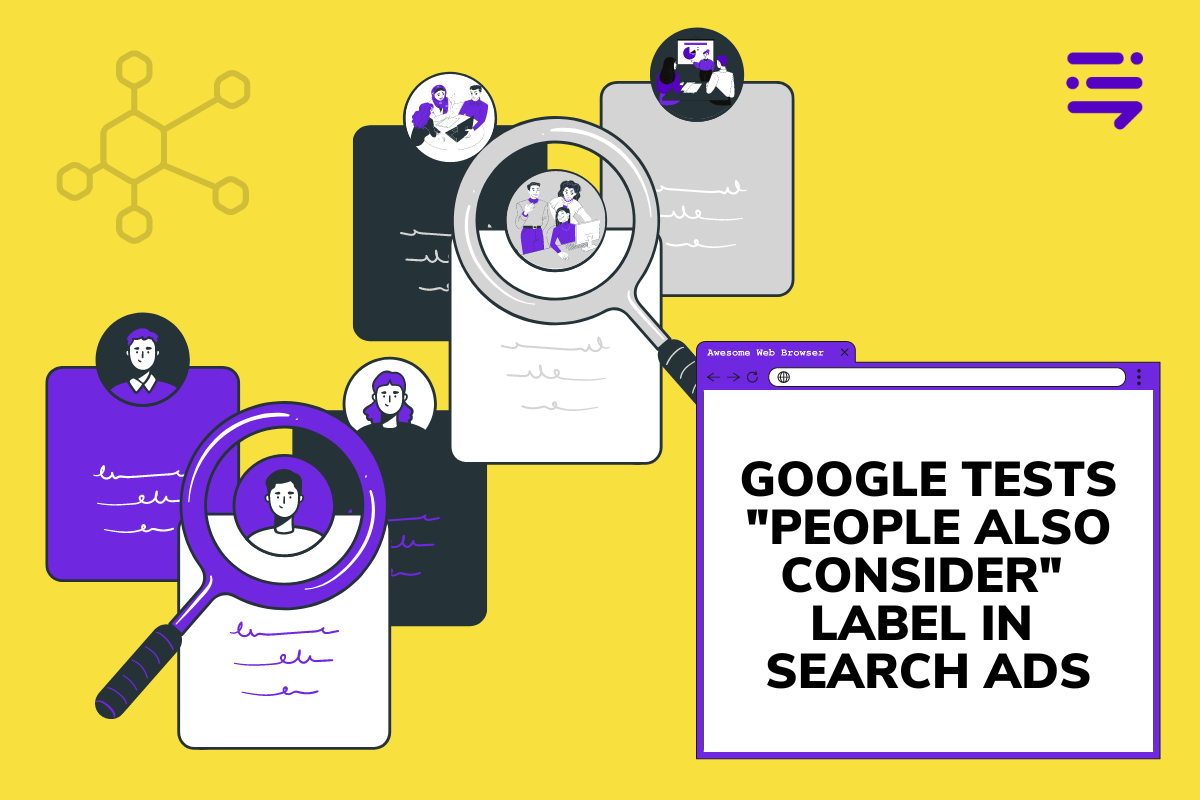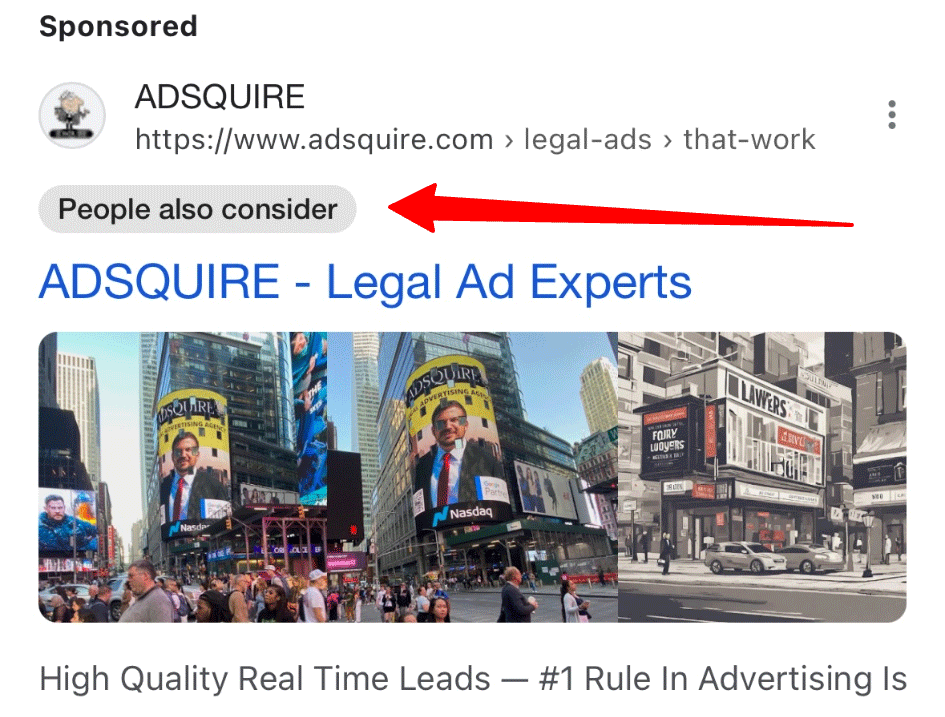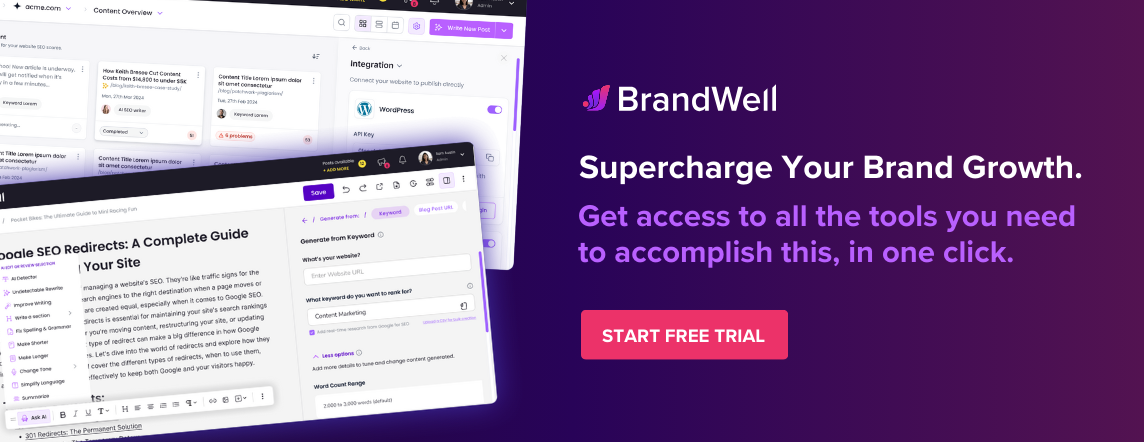Discover top guides, trends, tips and expertise from AIO Writers

Picture this: you’re searching for a product on Google, and the ads catch your eye. But wait, what’s that grey box next to some of them?
Surprise! It’s Google’s latest experiment – the “People Also Consider” label.
This innocuous little addition might seem like no big deal, but for advertisers, it could mean a whole new ballgame.
Now, let’s tackle the big question – what is this enigmatic term, and why should it catch your attention?
We’re about to get into the thick of Google’s recent move and its potential impact on how you manage ads.
Table Of Contents:
- Google Ads Testing “People Also Consider” Label
- Implications for Branded Search Campaigns
- Exploring the New Ad Label’s Functionality
- Potential Effects on Ad Auctions and Market Dynamics
- Monitoring Performance and Adapting Strategies
- Staying Informed on Google Ads Updates and Best Practices
- Conclusion
Google Ads Testing “People Also Consider” Label
Google’s at it again, shaking things up in the world of search ads. This time, they’re testing a new “People Also Consider” label on some Google Ads.
Yep, you read that right. A label on ads that shows what else people are searching for.
Weird AF, right?
How the Label Works
So here’s the deal. This new label pops up as a non-clickable grey box, sitting pretty under the company name, logo, and URL.
It’s Google’s way of saying, “Hey, here are some other options you might want to check out.”
But why? What’s the point? Is Google just trying to mess with advertisers?
Honestly, your guess is as good as mine.
Potential Impact on Advertisers
Now, if you’re an advertiser, you might be feeling a little uneasy about this whole thing. I mean, you’re already bidding on competitor brand searches, and now Google’s basically inviting people to consider your competitors?
Not cool, Google. Not cool.
But hey, maybe it’s not all bad news. Maybe this label will actually level the playing field a bit, giving smaller brands a chance to shine.
Or maybe it’ll just make the whole ad auction process even more of a Wild West shootout.
Improving User Experience
Of course, Google’s probably going to spin this as a way to “improve user experience.”
Because apparently, bombarding users with even more options is exactly what they want.
Right.
But let’s be real. This is Google we’re talking about. They’re not exactly known for their transparency.
So while they might say this is all about helping users make informed decisions, I have a feeling there’s more to the story.
Implications for Branded Search Campaigns
Now, if you’re running branded search campaigns, this new label might throw a wrench in your plans.
Suddenly, your precious ad real estate is being invaded by competitors, all thanks to Google’s meddling.
Protecting Brand Visibility
So what can you do to protect your brand’s visibility? Well, for starters, you might want to keep a close eye on your branded search ads.
Make sure they’re still showing up where they’re supposed to, and that they’re not being overshadowed by this new label.
You might also want to double down on your ad copy, really emphasizing what makes your brand unique.
Because let’s face it, if Google’s going to put your competitors’ names right next to yours, you better have a darn good reason why people should choose you.
Countering Competitor Ads
Speaking of competitors, this new label means you might have to get a little more aggressive in your bidding strategies.
If you want to make sure your ad shows up above the “People Also Consider” label, you might have to up your bids on branded terms.
And if you see your competitors’ ads popping up next to your brand name? Well, you might just have to fight fire with fire and start bidding on their branded terms too.
Hey, all’s fair in love and ad auctions, right?
Adjusting Bidding Strategies
Of course, all of this means you’ll probably have to take a long, hard look at your bidding strategies.
Are you allocating enough budget to branded search? Are you using the right mix of broad match and exact match keywords? Are you taking advantage of all the fancy bidding options Google offers?
These are the questions that keep search marketers up at night. And with this new label thrown into the mix, those questions just got a whole lot more complicated.
Exploring the New Ad Label’s Functionality
But enough doom and gloom. Let’s take a closer look at how this label actually works, shall we?
Placement and Appearance
First up, placement.
From what we can tell, the “People Also Consider” label shows up right under the main ad headline, in a grey box.
It’s not exactly subtle, but it’s not super in-your-face either.

Source: Seround Table
As for appearance, well, it’s pretty basic. Just a plain old grey box with some text in it. No fancy graphics or anything like that.
I guess Google’s designers were out sick that day.
Interaction with Other SERP Features
Now, here’s where things get interesting. How does this label play with other SERP features, like data carousels or those fancy schmancy “People Also Ask” boxes?
Honestly, it’s hard to say at this point. Google’s been pretty tight-lipped about the whole thing.
But if I had to guess, I’d say the label probably doesn’t have much impact on those other features. It’s just another thing to clutter up the SERP.
Eligibility Criteria
So who’s eligible for this label, anyway?
Well, again, Google’s not exactly forthcoming with the details. But based on the screenshots we’ve seen, it looks like the label is showing up on ads for pretty big brands.
Does that mean small businesses are out of luck?
Not necessarily. Google’s always testing new features with a limited group before rolling them out more widely.
So even if you’re not seeing the label on your ads now, that doesn’t mean you won’t in the future.
Potential Effects on Ad Auctions and Market Dynamics
Alright, let’s talk big picture. What does this label mean for the overall ad auction landscape?
Changes in Competition Level
Well, for one thing, it could make the auctions a lot more competitive. Think about it: if Google’s putting your competitors’ names right next to yours, that’s basically an open invitation for them to start bidding on your branded terms.
And if more advertisers start bidding on competitor terms, that could drive up costs for everyone.
Impact on Small Businesses
Of course, this could be especially tough for small businesses. They already have a hard enough time competing with the big boys in the ad auctions. Now, with this new label, they might have to spend even more just to maintain their visibility.
It’s a classic case of the rich getting richer and the poor getting poorer. Or in this case, the big brands getting bigger and the small brands getting squeezed out.
Shifts in Bidding Behavior
All of this could lead to some pretty big shifts in bidding behavior. Advertisers might start getting more aggressive, bidding on terms they wouldn’t have considered before. Or they might start getting more defensive, upping their bids on their own branded terms to keep competitors at bay.
Either way, it’s going to be a bit of a wild ride. And Google, of course, will be sitting back and watching the chaos unfold, laughing all the way to the bank.
Monitoring Performance and Adapting Strategies
So what’s an advertiser to do in the face of all this uncertainty? Well, the first step is to keep a close eye on your performance metrics.
Tracking Key Metrics
That means tracking things like click-through rates, conversion rates, and cost per click. If you see any big changes, that could be a sign that the “People Also Consider” label is having an impact.
Of course, it’s not always easy to tell what’s causing those changes. Is it the new label, or is it something else entirely? That’s where a bit of detective work comes in.
Adjusting Ad Copy and Targeting
Once you have a sense of how the label is affecting your performance, you can start making adjustments. That might mean tweaking your ad copy to better differentiate your brand from competitors. Or it might mean refining your targeting to focus on your most valuable audiences.
The key is to stay agile and be willing to experiment. Try out different approaches and see what works best for your brand.
Leveraging Audience Insights
And don’t forget about your audience insights. Now more than ever, it’s important to really understand your target customers.
What are their pain points? What motivates them to buy? How do they perceive your brand compared to competitors?
The more you know about your audience, the better equipped you’ll be to craft messaging that resonates with them, even in the face of increased competition.
Staying Informed on Google Ads Updates and Best Practices
Of course, all of this is easier said than done. Keeping up with Google’s constant updates and changes is a full-time job in itself.
Following Official Announcements
That’s why it’s so important to stay informed. Keep an eye on the official Google Ads announcements for any news about the “People Also Consider” label or other new features.
And don’t be afraid to reach out to your Google rep if you have questions. They might not always have all the answers, but they can at least point you in the right direction.
Engaging with Industry Experts
It’s also a good idea to engage with other industry experts. Follow PPC blogs and forums, attend conferences and webinars, and join online communities like #PPCChat on Twitter.
The more you connect with other advertisers and marketers, the more you’ll learn about how they’re adapting to changes like the “People Also Consider” label.
And who knows, you might even make some valuable connections along the way.
Implementing Proven Tactics
Finally, don’t forget about the tried-and-true best practices of PPC advertising. Things like ad relevance, landing page optimization, and bid management are just as important as ever, even in the face of new features like the “People Also Consider” label.
So while it’s important to stay on top of the latest trends and changes, don’t lose sight of the fundamentals. At the end of the day, those are what will really move the needle for your campaigns.
The bottom line? Google’s going to keep throwing curveballs at us, and it’s up to us as advertisers to stay on our toes and adapt. It’s not always easy, but hey, that’s what makes this job so darn exciting, right?
Key Takeaway: Google’s testing a “People Also Consider” label on ads, hinting at what else folks search for. This could shake up the ad game, making it tougher for brands to stand out and forcing advertisers to rethink their strategies. Stay sharp and ready to adjust your bids and copy.
Conclusion
Google adding a “People Also Consider” feature might look minor, but trust me, it’s set to shake things up in search advertising like you wouldn’t believe. By nudging users towards related brands and products, this label has the potential to shake up the playing field for advertisers.
But hey, change is the name of the game in the digital world, right? For advertisers, it’s all about staying nimble—monitoring those crucial numbers closely and being prepared to change course at a moment’s notice.
After all, when Google throws a curveball, it’s up to us to step up to the plate and knock it out of the park.

UNLOCK YOUR POTENTIAL
Long Headline that highlights Value Proposition of Lead Magnet
Grab a front row seat to our video masterclasses, interviews, case studies, tutorials, and guides.



